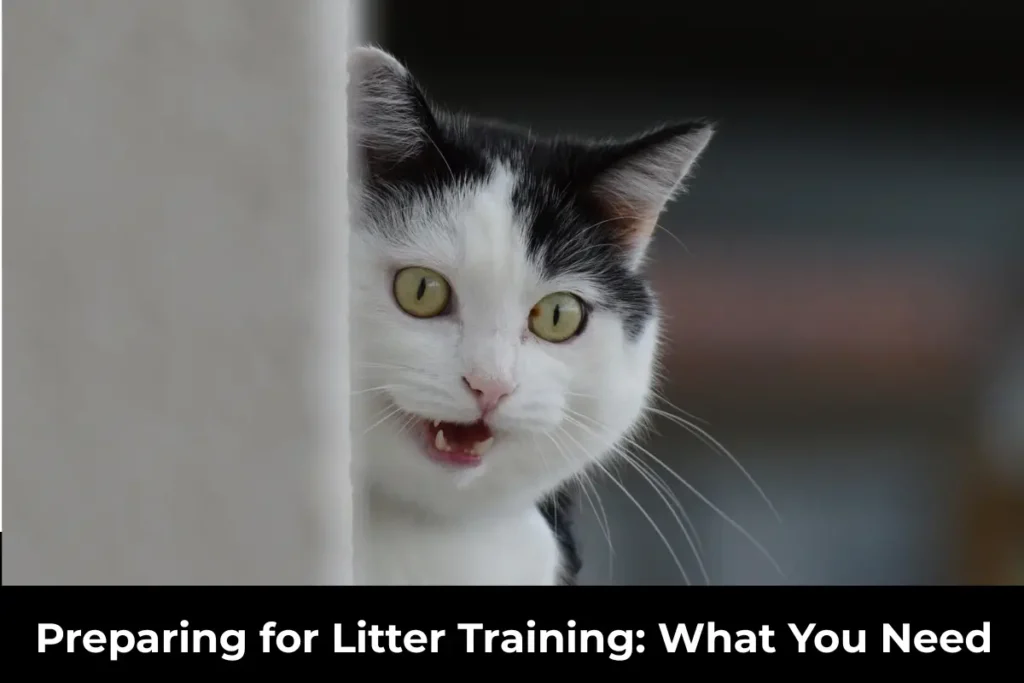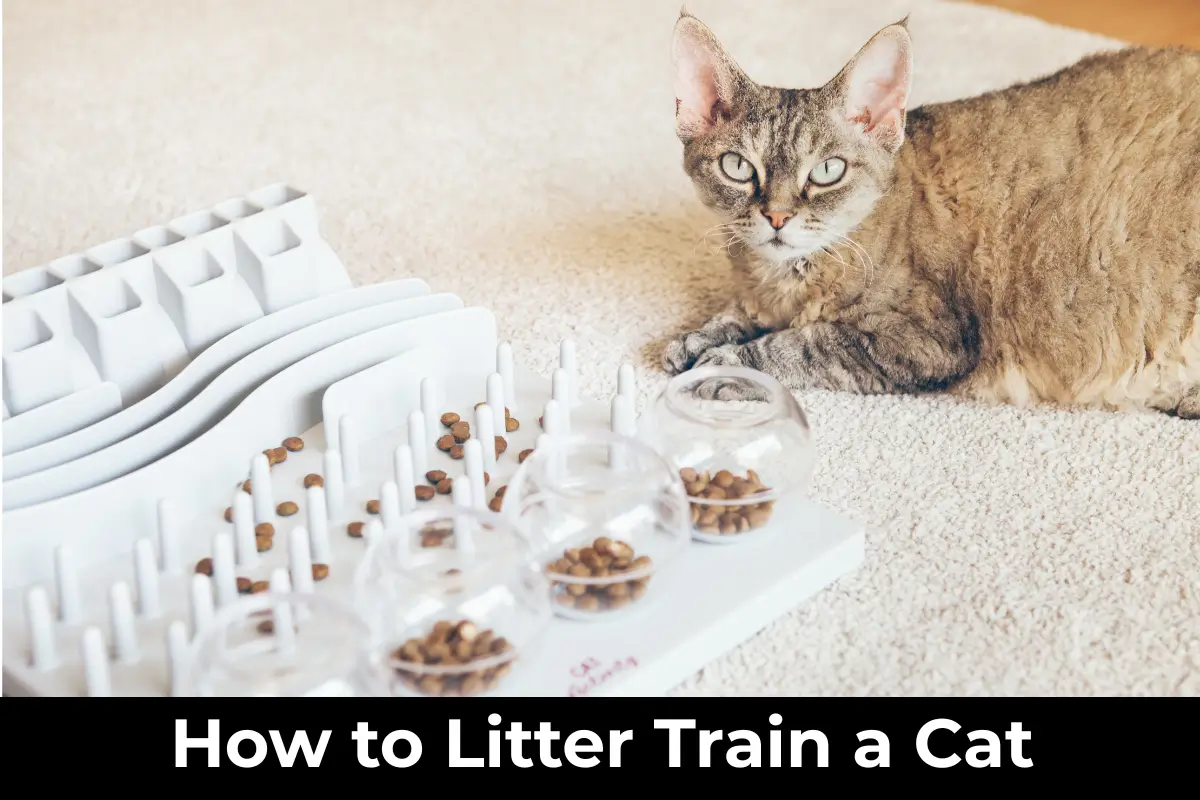Find out how to litter train a cat in any home. Use proven methods to train a cat to use a litter box. Start litter training success today!
Litter training a cat might sound tricky at first, but with the right approach, it’s totally doable—even if you’re doing it for the first time. When I brought home my kitten, figuring out how to litter train a cat was a bit of a learning curve, but with patience and some simple steps, it quickly became part of our daily routine. In this guide, I’ll walk you through everything you need to know—from choosing the right litter box to training outdoor cats to use one. By the end, you’ll feel confident helping your furry friend master their litter box like a pro!
Understanding the Basics: Why Litter Training is Important
If you’re wondering how to litter train a cat, the first thing to know is—it’s not just about keeping your floors clean. Cats are naturally tidy animals, but they still need a little help understanding where to go, especially in a new home or when they’re young. Litter training builds trust between you and your cat, creating a safe and predictable space where they feel comfortable doing their business.
✅ Short answer for snippet: Litter training teaches your cat where to go, prevents messes, and helps them feel secure indoors.
In my case, when I adopted my first kitten, she had no idea what a litter box even was. For a few days, I played a game of “find the accident,” and believe me, it wasn’t fun. But once I figured out how to train a cat to use a litter box—by placing her gently in it after meals and using soft praise—things started to click. The change didn’t happen overnight, but it happened.
For you as an owner, litter training is a lifesaver. No more smelly surprises, no more cleaning up random corners. For your cat, it’s about instinct, routine, and comfort. When you provide a clean, well-placed litter box, your cat quickly learns where it’s okay to go—and where it’s not.
✅ Short answer for snippet: A litter-trained cat reduces stress, keeps the home clean, and develops healthy habits.
The tough part for beginners? Expecting perfection too soon. Every cat is different—some take to the box right away, while others need more time. Kittens may dig and play before they “get it,” and older cats might resist changes. But don’t worry—it’s all part of learning how to litter train a cat the right way. With patience, positive reinforcement, and a little know-how, even the most confused kitty can learn fast.
✅ Short answer for snippet: New cat owners often struggle with litter box avoidance, but consistent training solves most issues.
Preparing for Litter Training: What You Need

Before diving into the actual training, let’s talk setup—because trust me, how to litter train a cat successfully starts with the right tools. I learned this the hard way when I grabbed a tiny, uncovered box and scented litter—my kitten refused to go near it. It turns out, cats are picky (and rightfully so), and giving them the right space makes all the difference.
✅ Snippet answer: To litter train a cat, you need the right litter box, litter type, and a calm location for best results.
🧺 1. Choosing the Right Litter Box
Start with a box that fits your cat’s size—not too small, not too deep. For kittens, a shallow box is best so they can climb in easily. Covered boxes look neat but can trap smells, which some cats hate. Personally, I found an open-top box placed in a quiet corner worked like magic.
✅ Snippet answer: Choose a shallow, uncovered litter box for kittens; adult cats may prefer larger or covered boxes.
🪨 2. Selecting the Best Cat Litter
I’ve tried everything—from fancy clumping clay to eco-friendly pine pellets. The winner? Unscented clumping litter. It’s soft on paws, easy to scoop, and doesn’t overwhelm their sensitive noses. Avoid strong perfumes—your cat’s nose is way more powerful than yours.
✅ Snippet answer: Use unscented clumping litter; it’s gentle, low-odor, and easy to clean—perfect for litter training.
📍 3. Picking the Perfect Location
This part matters more than people realize. Keep the litter box in a quiet, low-traffic spot—away from food and water bowls. Avoid noisy appliances like washing machines. Think of it as your cat’s private bathroom—they need peace, just like we do.
✅ Snippet answer: Place the litter box in a quiet, private spot away from food and noise for better training success.
🛒 4. Supplies Checklist for Litter Training
Here’s what you’ll want to have ready before you start:
- 1–2 litter boxes (especially if you have more than one cat)
- High-quality, unscented clumping litter
- Litter scoop and a lined waste bin
- Unscented enzyme cleaner for accidents
- Treats for positive reinforcement
When I started litter training my kitten, having this simple setup made the process smooth and less messy. These items helped me figure out how to litter train a cat kitten without stressing her—or me—out.
✅ Snippet answer: A basic litter training kit includes a box, clumping litter, scoop, cleaner, and treats.
Step-by-Step Guide to Litter Train Your Cat
When it comes to how to litter train a cat, having a simple plan makes the process way less overwhelming. I still remember the first day I brought my kitten home—tiny, curious, and totally uninterested in the litter box. But with a few calm steps and a lot of treats, she caught on quickly. Whether you’re litter training a kitten or starting fresh with an older cat, this method works like magic.
✅ Snippet answer: Litter train your cat by introducing the box, using positive reinforcement, keeping it clean, and watching their behavior.
🐾 Step 1: Introducing the Cat to the Litter Box
As soon as your cat arrives home, gently guide them to the litter box. Let them sniff around, maybe step in. I made it a routine to place my kitten in the box after naps and meals—two times when cats are most likely to go.
If your cat is hesitant, don’t force it. Just make the box easy to access and let curiosity do the rest.
✅ Snippet answer: Introduce your cat to the litter box right away, especially after naps or meals.
💖 Step 2: Encouraging Use and Positive Reinforcement
Every time your cat uses the litter box, praise them gently. I used a soft “good job” and a tiny treat the first few times. Avoid scolding for accidents—it only causes fear. Instead, clean up calmly and redirect them to the box again.
Cats respond best to kindness and routine. Celebrate the small wins—it builds trust and confidence.
✅ Snippet answer: Reward your cat with praise or treats after they use the litter box correctly.
🧼 Step 3: Cleaning and Maintenance Routine
Cats are super clean by nature, and they’ll avoid a dirty box. Scoop it at least once a day—I do it twice, morning and night. Once a week, I give the whole box a wash with warm water and unscented soap.
If you’re wondering how to potty train a cat with a litter box, cleanliness is a huge part of the puzzle.
✅ Snippet answer: Keep the litter box clean by scooping daily and washing weekly to encourage consistent use.
🔍 Step 4: Monitoring Progress and Adjusting as Needed
Pay attention to your cat’s habits. Are they going regularly? Avoiding the box? Scratching outside it? These are signs something may need adjusting—like the litter type, box size, or even location.
When I noticed my cat suddenly peeing near the sofa, I realized the laundry room (her box spot) was getting too loud during wash time. I moved it to a quieter corner, and the problem stopped overnight.
✅ Snippet answer: Watch your cat’s behavior and adjust litter box setup if they start avoiding it.
With these steps, how to litter train a cat for the first time becomes way less stressful. Just remember—it’s all about routine, patience, and making your cat feel safe. Some pick it up in a day, others take a week or two. But they all get there in their own way.
✅ Snippet answer: Most cats learn litter box habits with routine, gentle guidance, and patience.
Special Cases: Training Different Types of Cats
Sometimes, how to litter train a cat isn’t a one-size-fits-all journey. Kittens, outdoor cats, or those adjusting to a new home can each bring their own little challenges. But don’t worry—I’ve dealt with them all, and with a little patience and creativity, you absolutely can too.
✅ Snippet answer: Different cats—kittens, outdoor cats, or newly relocated ones—may need extra care and patience during litter training.
🍼 How to Litter Train a Kitten
Kittens are like toddlers—they’re curious, playful, and not always great at following rules. When I litter trained my kitten, I made sure her box was easy to climb into and placed nearby. I’d pop her in after every meal and nap, and slowly, she started connecting the dots.
You may notice your kitten playing in the litter at first. Totally normal. Let them explore and learn.
✅ Snippet answer: To litter train a cat kitten, use a shallow box, guide them often, and be patient as they learn.
🌳 How to Train an Outdoor Cat to Use a Litter Box
This one can be tricky but totally doable. When I rescued an outdoor cat, she had never seen a litter box in her life. I started by placing a box filled with soil near the door—something familiar. Then I slowly mixed in clumping litter over a few days.
Bringing nature inside helped her adjust. Eventually, I replaced the soil completely with litter, and she was trained!
✅ Snippet answer: Train an outdoor cat to use a litter box by starting with natural soil and slowly transitioning to litter.
🏠 How to Litter Train a Cat in a New Home
Cats love routine, so moving can throw them off. If your cat is suddenly ignoring the litter box after a move, it’s likely due to stress or confusion. When I moved apartments, my cat hid for two days and wouldn’t use her box.
I placed it in a quiet corner where she liked to rest, and gave her time to explore. Once she felt safe again, she went right back to using it.
✅ Snippet answer: To litter train a cat in a new home, create a quiet, secure spot and give your cat time to adjust.
🧠 Addressing Common Behavioral Issues
Sometimes, even well-trained cats act out. Maybe they pee outside the box or start avoiding it altogether. It’s not always defiance—often it’s a cry for help. Changes in routine, a dirty box, or even illness can trigger this.
Whenever I see a sudden change in behavior, I double-check everything: is the box clean? Is there a loud noise nearby? If all seems fine, a vet check might be needed just to be safe.
✅ Snippet answer: Litter box issues often signal stress, dirty boxes, or health problems—check conditions or consult a vet.
Every cat is unique, and that’s what makes them special. Whether you’re figuring out how to train an outdoor cat to use a litter box, or guiding a kitten in a new home, the key is empathy. Step into their little paws for a moment, and you’ll know what they need.
✅ Snippet answer: With gentle routines and a calm setup, all cats—no matter their background—can learn to use the litter box.
🚨 Troubleshooting Common Litter Training Problems
Let’s be real—how to litter train a cat sounds easy until your furry friend decides the floor is more appealing than the box. I’ve been there. One day everything’s fine, and the next, your cat is avoiding the litter box like it’s haunted. But don’t panic—most litter box issues are fixable with a few tweaks and a little detective work.
✅ Snippet answer: If your cat avoids the litter box, check for stress, cleanliness, or litter type—it’s usually a simple fix.
😾 What to Do If Your Cat Avoids the Litter Box
First things first: don’t take it personally. Cats don’t hold grudges—they communicate through behavior. When my cat suddenly started peeing under the bed, I was frustrated. But after checking, I realized the litter box was too close to her food bowl. Once I moved it, the accidents stopped.
Start by asking:
- Is the box clean?
- Is it in a quiet spot?
- Did you recently switch litter brands?
These little things can feel huge to a cat.
✅ Snippet answer: Cats often avoid litter boxes if they’re dirty, too close to food, or in a noisy spot.
🧽 Handling Accidents and Breaking Bad Habits
Accidents happen. When they do, clean them thoroughly with an enzyme cleaner—not just regular soap. Why? Because cats can still smell it, even if you can’t, and they’ll return to that spot like it’s their new toilet.
When my kitten peed behind the curtain (yes, really), I gently wiped her paws, cleaned the spot, and placed her back in the litter box. No yelling. Just calm redirection. And guess what? She got the message.
✅ Snippet answer: Clean accidents with enzyme cleaners and calmly guide your cat back to the litter box.
🩺 When to Call the Vet or a Behaviorist
Sometimes, the issue isn’t behavior—it’s health. If your cat suddenly stops using the litter box, squats without peeing, or cries while urinating, get them to a vet immediately. Urinary tract infections (UTIs) and bladder stones are more common than you’d think.
Also, if your cat is stressed (like after a move or new pet introduction), a feline behaviorist can help create a calming routine.
✅ Snippet answer: If your cat shows pain or sudden changes, consult a vet—it could be a health issue.
🛠️ Tips for Persistent Issues
If you’ve tried everything and your cat still isn’t cooperating, here are a few last tricks that worked for me:
- Try a new litter type—some cats prefer soft textures or natural litters.
- Add another box—especially in multi-cat homes.
- Use positive associations—give a treat after every successful use.
- Change the location—quiet and low-traffic is best.
My older cat didn’t like the plastic liner I was using—it crinkled too loudly. Once I removed it, she used the box again like nothing had ever happened.
✅ Snippet answer: Adjust litter, box number, or location—many cats respond quickly to small changes.
Training a cat isn’t about perfection—it’s about progress. If you’re learning how to train a cat to pee in the litter box, remember that every misstep is part of the process. Cats are sensitive, intuitive creatures. Once they feel safe, heard, and understood, they’ll reward you with good habits and fewer messes.
✅ Snippet answer: Litter training takes patience—watch your cat’s cues, adjust as needed, and celebrate progress.
Conclusion of How to Litter Train a Cat
Litter training a cat may feel challenging at first, but with the right steps, patience, and setup, it becomes simple and stress-free. Whether you’re learning how to litter train a cat for the first time, working with a kitten, or teaching an outdoor cat to use a litter box, success comes with routine, kindness, and understanding.
From choosing the best litter and box to spotting early mistakes and adjusting your approach, every part of the process helps your cat feel more at home. Clean, quiet spaces and gentle encouragement go a long way in creating good habits that last.
No matter your cat’s age or past, litter training is possible—and worth it. Stick to the basics, listen to your cat, and celebrate progress. Soon enough, your furry friend will confidently use the litter box like a pro.
Start today with these simple tips and see the difference!
FAQs: How to Litter Train a Cat
Q1. How long does it take to litter train a cat?
Most cats learn in 1 to 2 weeks. Stay patient and consistent while training your cat to use a litter box for the first time.
Q2. Can you litter train a cat in a new home?
Yes. To litter train a cat in a new home, place the litter box in a quiet area and help your cat feel safe and calm.
Q3. How do I litter train a kitten?
To litter train a cat kitten, use a shallow litter box and place the kitten in it after meals and naps. Praise them when they use it.
Q4. What is the best litter for training cats?
Use unscented clumping litter. It helps when learning how to potty train a cat with a litter box, and it’s easy to clean.
Q5. Can outdoor cats be trained to use a litter box?
Yes. To train an outdoor cat to use a litter box, start with soil in the box, then slowly add litter over time.
Q6. Why is my cat avoiding the litter box?
If your cat avoids the box, it might be dirty or in a loud place. Clean the box often and move it to a calm spot.
Q7. How do I train a cat to pee in the litter box?
Place your cat in the box after eating or waking. If they pee in it, give praise or treats. This helps build a habit fast.
Q8. What should I do if my cat has accidents?
Clean accidents with unscented cleaner. Avoid scolding. Help your cat find and use the box again with calm guidance.
Q9. Do adult cats need litter training too?
Yes. Older cats can learn how to use a litter box. Just like kittens, they need time, calm, and routine.
Q10. Where should I place the litter box?
Place it in a quiet area, away from food and loud machines. A calm, private spot makes litter training much easier.

